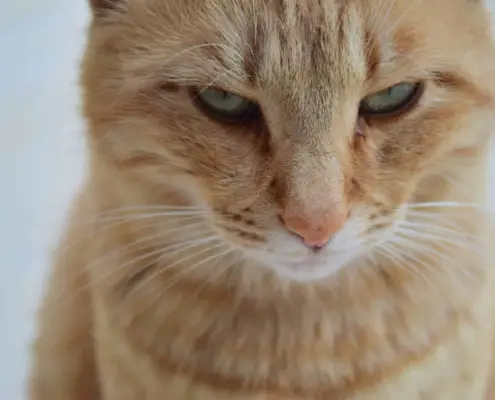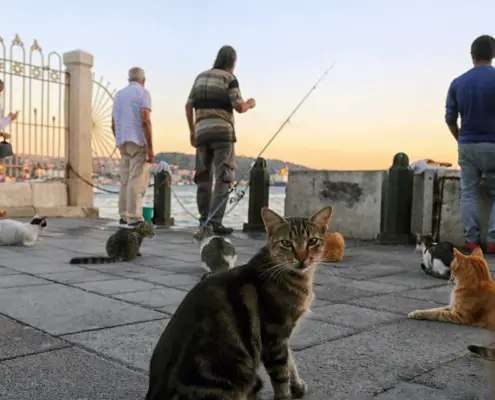
Play is an essential part of a cat’s life, and it serves several important purposes. Not only does play provide entertainment and mental stimulation for cats, but it also helps them maintain their physical health and social skills. Cats are natural hunters, and play mimics the hunting behavior they would exhibit in the wild. Engaging in play allows them to fulfill their natural instincts and keep their minds and bodies active.
When cats play, they engage their muscles, increase their heart rate, and improve their coordination. This physical activity helps them maintain a healthy weight and prevents obesity-related health issues. Additionally, play helps cats relieve stress and boredom, reducing the likelihood of destructive behaviors such as scratching furniture or excessive grooming. It also provides an opportunity for cats to socialize with other cats or humans, strengthening their bond with their owners.
Understanding Cat Behavior
To understand why cats love to play, it’s important to have a basic understanding of their behavior. Cats are curious creatures and have a strong prey drive. They are wired to chase, pounce, and capture their prey. Even though domesticated cats no longer need to hunt for their survival, their instincts remain intact. Play is a way for them to express and satisfy these instincts.
Cats have a highly developed sense of sight, hearing, and smell. Their whiskers, in particular, play a crucial role in their play behavior. Whiskers are highly sensitive and help cats navigate their environment with precision. During play, cats use their whiskers to judge distances and determine the position of their prey or toys. This heightened sensory perception enhances their play experience and makes it more enjoyable for them.
The Science Behind Cat Play Behavior
The science behind cat play behavior is fascinating. Studies have shown that play triggers the release of endorphins in cats. Endorphins are neurotransmitters that create feelings of pleasure and happiness. When cats engage in play, these endorphins flood their brain, creating a positive association with playtime. This reinforces their love for play and encourages them to seek out play opportunities.
Additionally, play helps cats release pent-up energy and reduce stress. When cats are stressed, their bodies produce cortisol, a stress hormone. Play stimulates the production of dopamine and serotonin, neurotransmitters that counteract the effects of cortisol and promote relaxation. This is why a good play session can leave a cat feeling content and calm.
Benefits of Play for Cats
Play offers numerous benefits for cats. Apart from the physical exercise and mental stimulation it provides, play can also help prevent behavior problems. Cats that are engaged in regular play are less likely to engage in destructive behaviors like scratching furniture or aggression towards humans or other animals. Play also helps cats maintain a healthy weight, reducing the risk of obesity-related health issues such as diabetes or joint problems.
Furthermore, play can improve a cat’s overall well-being and quality of life. It promotes a positive bond between cats and their owners, as playtime is a shared experience that strengthens the human-animal bond. Play also provides an outlet for a cat’s natural instincts, preventing boredom and frustration. Cats that have regular play sessions are generally happier, more content, and less prone to behavioral issues.
Different Types of Cat Play
Cats engage in various types of play, each serving a different purpose. Predatory play is the most common type, where cats chase, pounce, and capture their toys or objects. This type of play allows cats to express their hunting instincts. Interactive play involves the owner actively participating in play sessions, using toys like fishing pole toys or laser pointers. Interactive play is a great way to bond with your cat and provide them with mental and physical stimulation.
Object play involves cats playing with inanimate objects, such as balls or stuffed toys. This type of play allows cats to entertain themselves when their owners are not available for interactive play. Social play involves cats playing with other cats or humans. This type of play helps cats develop their social skills and provides an outlet for their excess energy. Understanding the different types of play can help cat owners cater to their cat’s specific play preferences.
How to Engage Your Cat in Play
Engaging your cat in play is not only fun for them but also beneficial for their overall well-being. Here are some tips to help you effectively engage your cat in play:
- Choose the right toys: Cats have different preferences when it comes to toys. Some cats enjoy interactive toys, while others prefer objects they can play with independently. Experiment with different types of toys to see what captures your cat’s interest.
- Create a stimulating environment: Set up a play area for your cat with toys, scratching posts, and climbing structures. This will encourage them to explore and engage in play.
- Use variety: Cats can get bored easily, so it’s important to keep playtime interesting. Rotate toys regularly and introduce new ones to keep your cat’s play sessions engaging.
- Set a consistent play schedule: Cats thrive on routine, so establish a regular play schedule. Find a time that works best for both you and your cat, and make playtime a daily ritual.
- Follow your cat’s lead: Pay attention to your cat’s body language and play style. Some cats prefer gentle play, while others enjoy more vigorous play. Adjust your play style accordingly to ensure your cat feels comfortable and engaged.
Toys and Games for Cats
There is a wide range of toys and games available to keep your cat entertained and engaged. Fishing pole toys, such as feather teasers or wand toys, are excellent for interactive play. These toys mimic the movement of prey, stimulating your cat’s hunting instincts. Puzzle toys, treat-dispensing toys, and interactive feeding bowls are great options to provide mental stimulation during mealtime.
Catnip toys can be a hit with cats that are affected by catnip. The scent of catnip stimulates cats’ pleasure centers, making playtime even more enjoyable for them. Laser pointers can also be used for interactive play, but it’s important to never shine the laser directly in your cat’s eyes to avoid potential eye damage.
Playtime Tips for Cat Owners
To make the most out of playtime with your cat, here are some additional tips:
- Allow for independent play: While interactive play with your cat is important, it’s also essential to provide them with toys they can play with independently. This allows them to engage in play even when you’re not available.
- Gradually increase play intensity: Start play sessions with slow movements and gradually increase the intensity. This mimics the hunting process and keeps your cat engaged.
- End play sessions on a positive note: Always end playtime on a positive note, allowing your cat to catch and “capture” their toy. This gives them a sense of accomplishment and satisfaction.
- Provide post-play rewards: After a vigorous play session, reward your cat with a small treat or a meal. This reinforces the positive association with playtime and provides a satisfying end to the session.
- Observe safety precautions: Ensure that the toys you provide are safe for your cat. Avoid small parts that can be easily swallowed or toys with long strings that can pose a choking hazard.
Conclusion
Understanding why cats love to play involves delving into their natural instincts and behavior. Play is a vital part of a cat’s life, providing mental and physical stimulation, stress relief, and social interaction. By engaging in play with your cat and providing them with a variety of toys and games, you can enhance their overall well-being and strengthen the bond you share. So, go ahead and indulge in playtime with your feline friend – it’s not just fun, but a scientifically proven way to keep your cat happy and healthy.
Spend quality playtime with your cat today and provide them with the mental and physical stimulation they need. Shop for interactive toys and games that will keep your cat entertained and engaged.
If you enjoyed my article, I would appreciate you sharing it with your network.

Sima Ndlebe
Sima writes for CatBuzz. He is interested in Cats, Health and Fitness, and Entrepreneurship.
Published: 25 October 2023




